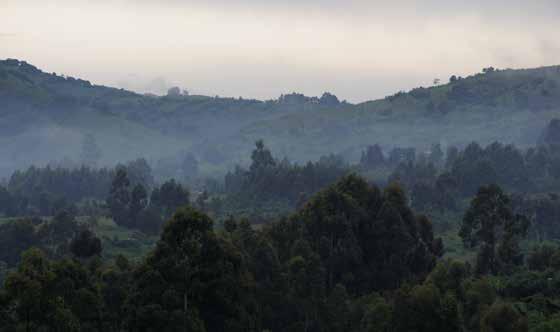
2 minute read
Climate Justice and The Envirnoment in Shinyanga
from USPG Koinonia Issue 3 2020
by USPG
ISSUE 3 2020
CLIMATE JUSTICE AND THE ENVIRONMENT IN SHINYANGA, TANZANIA
By The Right Reverend Johnson Japheth Chinyong’ole, Bishop of Shinyanga, Anglican Church of Tanzania
Landscape in Tanzania
The Anglican Diocese of Shinyanga covers three districts of the Shinyanga region and four districts of the Simiyu region. This area is located in the north-west of Tanzania, is a semi-arid and used to consist of extensive acacia and miombo woodlands. High population densities (42 people per km2) combined with an agro-pastoral land-use system exacerbated existing problems of clearing land for cultivation. The United Republic of Tanzania comprises Tanzania Mainland and Zanzibar, has a total area of 945,087 square kilometres and an estimated population of over 56 million, making Tanzania one of the largest countries in East Africa. Climate change and environmental damage are two of the most dramatic challenges facing the world today. In the last 40 years, Tanzania has experienced severe and recurring droughts, floods and storms with devastating effects on agriculture, water resources, human health, energy, ecosystems, and infrastructure sectors. Currently more than 70% of all natural disasters in Tanzania are climate change related and are linked to recurring droughts and floods. Rising temperatures, longer dry spells, more intense heavy rainfall and rises in sea level make Tanzania the 26th most vulnerable country to climate change. The impacts of climate change are not being borne equally or fairly, between wealthy and poorer nations, women and men and older and younger generations. Consequently, there has been a growing focus on climate justice, which looks at the climate crisis through the humanrights lens, and in the belief that by working together we can create a better future for present and future generations. Climate justice calls for clean, renewable, locally controlled and low-impact energy resources in the interest of a sustainable planet for all living things. It affirms the right of all people, including the vulnerable, women, rural and indigenous peoples, to have access to affordable and sustainable energy. It links human rights and development to achieve a human-centred approach, safeguarding the rights of the most vulnerable people and sharing the burdens and benefits of climate change and its impacts equitably and fairly. In recognition of this fact, the government of Tanzania and the donor community have already initiated activities to incorporate climate change into the country’s strategic vision, determining priorities for key sectors such as agriculture and food security, and developing a National Climate Change Strategy to ensure that food production is not threatened. The Church must declare that God’s Creation is in crisis, suffering because of our neglect, selfishness, and pride which have fostered a pandemic of poverty and environmental degradation. We must begin the work of renewing Creation by being renewed in our own hearts and minds. ■










